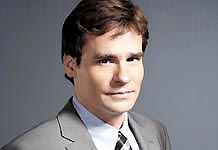No extended description of London from that period failed to mention the stench of the city. p8
Isn't it great to find a new nonfiction author who delivers on style and content? Steven Johnson's 2006 book about, well, a whole bunch of stuff, was a wonderful narrative history book, and he's written several other books, three of which are available on audiobook from my library. So, not only did I read a great book, I've got a backlist to investigate as well about popular science topics. Score!
But the finest minds of the era were also devoted to an equally pressing question: What are we going to do with all this shit? p 115
The Ghost Map is about the development of modern cities, the development of public health, and scientist John Snow, all framed around an epidemic of cholera in 1854 London. I enjoyed the history aspect of the development of the mega city and the scientific process of determining the cause of the cholera epidemic. Snow faced a decided opposition who believed that disease was spread through the 'miasma' of the air, and thus, also the moral depravity of the poor who so often suffered through the spread of terrible diseases. By supposing that cholera was spread through injestion of bad water, Snow investigated and was able to stop the epidemic from getting worse.
Johnson easily moves from the specific story of Snow and cholera on Broad Street to the larger historical context of the spreading of diseases and city development. From biographical details of the main characters like Snow, and the local curate, Henry Whitehead, to the scientific background of bacteria and their evolutionary progress, Johnson keeps his narrative in order and progressing. He even at the end connects the ideas of cholera epidemics to modern epidemics and threats to city living.
Traditional bombs obviously grow more deadly as the populations they target increase in size, but the upward slope in that case is linear. With epidemics, the deadliness grows exponentially. p 243
(the math teacher in me loved this example)
The fact that Snow was able to figure out as much as he did without any understanding of bacteria and microbes is pretty amazing. In fact, I was put to mind the great book I read last year, I Contain Multitudes, a very up-to-date understanding of the creepy crawly stuff we can't see. The two books would be like book-ends in the history of epidemics based on bacteria and viruses. (I'm really just looking for any reason to recommend these two books.)
Johnson ends with a timely reminder of what is needed to keep humanity living and progressing in larger and larger cities:
1. Embrace - as a matter of philosophy and public policy - the insights of science, in particular the fields that descend from the great Darwinian revolution that began only a mater of years after Snow's death: genetics, evolutionary theory, environmental science.
2. Commit ourselves anew to the kinds of public health systems that developed in the wake of the brad Street outbreak, both in the developed world and the developing: clean water supplies, sanitary waste-removal and recycling programs. p 255
More of Steven Johnson's Books to look forward to:
Everything Bad is Good for You: How Today's Popular Culture Is Actually Making Us Smarter
Where Good Ideas Come From: The Natural History of Innovation
Mind Wide Open: Your Brain and the Neuroscience of Everyday Life
How We Got to Now: Six Innovations That Made the Modern World
Future Perfect: The Case For Progress In A Networked Age
Wonderland: How Play Made the Modern World





